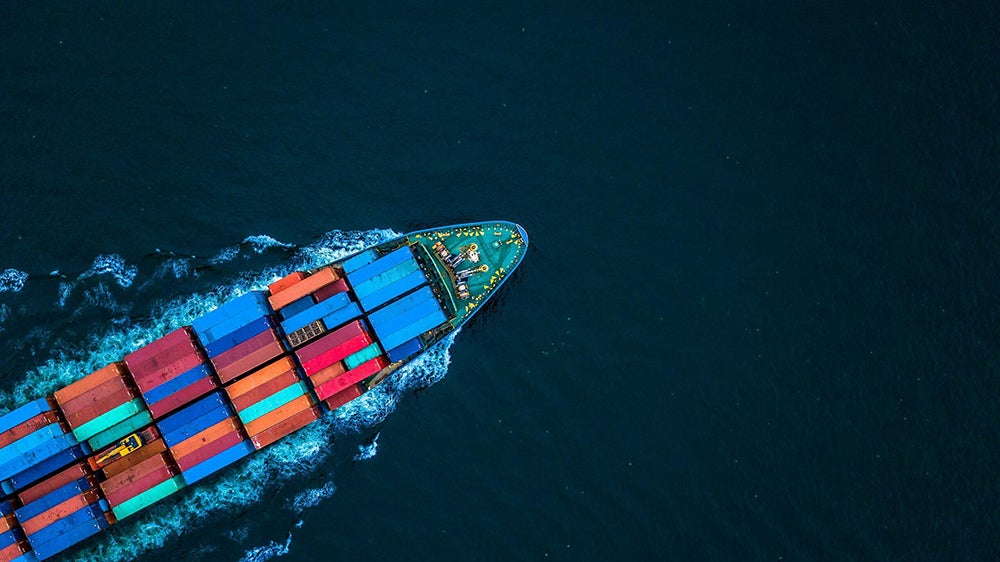Just when you thought it was safe to ship a sofa overseas, another fistful of sand gets thrown into the global supply chain’s gears. While the issues are nowhere near peak pandemic levels, rising costs, reduced capacities and logistical problems (both human-made and Mother Nature–made) are once again at the fore among suppliers, importers and retailers throughout the home furnishings world.
To be clear, this isn’t Covid all over again. We’re not talking containers costing $20,000, freighters backed up for miles at ports, or trucks stuck on the side of the road for want of a driver. Yet, an area of business that few gave much thought to before 2020—and that had receded in concern as recently as a few months ago—is back in the news, and it may get worse before it gets better.
Even as business remains challenging for most home companies, we’re in the heart of the busy season for imported goods destined for retail shelves in time for the last quarter of 2024. That means capacity is being stretched thin at a time of strain on the system.
Spot rates on containers from Asia to the West Coast of the U.S. are running about $7,000, a 93 percent jump from late March, when rates averaged $3,628—and those numbers have been rising for 10 consecutive weeks, according to analyst firm TD Cowen. Rates from Asia to the East Coast are even higher, as much as $1,000 above shipments to California and Washington State.
The same report, citing the industry consulting company Freightos, forecasts that transpacific demand will peak in August and rates will continue to climb in the near term.
How did we get here? Global politics is a big part of the problem. Houthi rebels positioned near the entrance to the Suez Canal are deterring many ships from China, which are rerouting for a much longer journey around Africa to reach Europe. That hot spot is not directly impacting ships headed from Asia to America, but longer trips on the water have reduced capacity overall.
The Panama Canal, meanwhile, has faced issues for most of the past 18 months because of low water levels caused by climate change—conditions that fortunately seem to be easing up. Still, the canal is not yet back to full capacity, which means ships from Asia to the U.S. East Coast continue to deal with slower, more expensive trips.
And while it’s only speculation, many industry insiders insist that the big shipping companies—three of which control as much as 90 percent of all oceangoing freight, according to some estimates—quietly and voluntarily took some capacity out of service to drive up rates when those container prices started to bottom out over the past year. For now, it’s unconfirmed industry gossip, but it’s top of mind for many of the major players navigating container costs.
And oh, did someone mention potential strikes by dockworkers? It does seem that there’s always some labor contract up for renegotiation at any given time in the shipping industry, so we’ll just chalk this up to business as usual—which is not to say there couldn’t be a strike just to mess with things a little more.
One more factor: Some companies are getting spooked over a potential Trump presidency, which could bring astronomical jumps in tariffs on Chinese goods—to about 60 percent. That’s leading some companies to act preemptively, moving up deliveries to get shipments out of China before those tariffs become imminent, frontloading a process that is further stretching the supply chain.
There is some good news. For one, rates often peak in late summer as goods enter the pipeline for the holiday season, which means we are about to see the worst of things—but it will get better soon.
There’s also the fact that most major companies don’t buy containers on the spot market; they have locked-in contracts that guarantee rates significantly lower than these rising costs. Even back in the worst days of the pandemic, when spot rates were as high as $25,000, many big shippers were still paying substantially less than $10,000 a container—some as low as $5,000.
And let’s remember that even at $7,000, this is still as little as one-third the rate companies dealt with during the pandemic craze.
Finally, some industry insiders are holding out hope for a wave of new large-capacity vessels due to come into service later this year. These ships were ordered during the pandemic, and they’ll represent a substantial increase in capacity when they do arrive. “It is, therefore, just a matter of time until the capacity issue is fully resolved,” Vincent Clerc, chief executive of Maersk (one of the big shipping companies) told investors in February, according to The New York Times.
For home industry suppliers, retailers and importers, there is hope that their ship will indeed come in soon—and that it will start to cost less again.
____________
Warren Shoulberg is the former editor in chief for several leading B2B publications. He has been a guest lecturer at the Columbia University Graduate School of Business; received honors from the International Furnishings and Design Association and the Fashion Institute of Technology; and been cited by The Wall Street Journal, The New York Times, The Washington Post, CNN and other media as a leading industry expert. His Retail Watch columns offer deep industry insights on major markets and product categories.





























